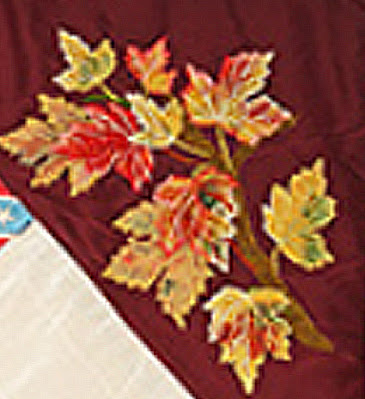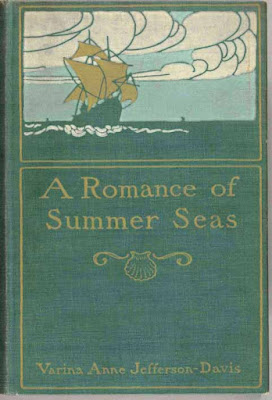Ladies' Aid Sampler #2 Cow by Becky Brown
E. Dezendorf's block in an 1855 quilt from Rockland County
sold at a Skinner's Auction.
Now, you might think a cow is an odd image for
an album quilt but not in New York,
It's got to be a New York quilt; it has horses and cows.
From an old Quilt Engagement Calendar
Quilt dated 1852 for Elizabeth Griffiths, attributed to members of the
Middletown Baptist Church (now Pearl River)
Rockland County, New York
Collection of the Orangetown Museum
Farmers who subscribed to the Rural New Yorker would
have had many images of farm animals for inspiration.
Menagerie of domestic and wild animals on a sampler dated 1860-1862
from the Blauvelt, Van Houten & Thomas families of Rockland County.
People in Rockland and Orange Counties, home to many farm families who
raised prize cattle, were fond of cows on quilts. Note Blauvelts &
Van Houtens.
When the Civil War began, the small villages in Orange County responded to the requests for soldiers' clothing and bedding. But in September 1862 the Tri-State Union chided the ladies of Port Jervis for their lack of ambition:
"In Newburgh, Middetown, Montgomery, Goshen, Warwick, and in fact---all of our sister towns 'Ladies' Aid Societies' have already been organized...In this village we believe nothing has as yet been done...."
A few days later Mrs. H. H. Farnum (Abigail St. John Farnum 1817-1874), and Mrs S.E. Cunningham, (Sarah Elizabeth Cunningham 1811-1890) formed a Port Jervis Ladies' Aid Society. Like many of the women who headed the Sanitary Commission's local agencies, these women were prominent citizens.
Port Jervis in 1860, The Germantown School
Minisink Valley Historical Society
The Farnums were rated the wealthiest people in town in a later obituary. Abigail's husband Henry was a banker and a dry goods merchant. While the Farnums raised money for the cause they also contributed their own. In 1862 Mr. Farnum offered a $10 bounty to men joining a local company.
Reunion of an Orange County regiment "The Orange Blossoms"
at their monument in Goshen.
Sarah E. Cunningham spoke for the Ladies' Aid Society towards the end of the war when they welcomed home a local regiment who marched through town and into Lockwood's Hall where they were met with a dinner prepared by the Aid Society and a rather eloquent speech by Sarah.
"Nearly three years have elapsed since you left our village a gallant band, pledged to support your country's flag, her honor, and her laws....Nobly have you redeemed that pledge; your diminished ranks attest it....the tattered remnants of your beautiful flag...attest it. Of all the brilliant constellation that once adorned that flag, but one star remains...the star of Hope."
Battle worn flags were revered souvenirs.
The ladies of Orange County had sent this hand made
flag to the boys in 1864.
Photos were sold to raise funds.
The memorial was dedicated in 1886.
Diana Farnum's name is prominently featured
The Block
#2 Cow by Denniele Bohannon
Surly cow escapes
See more Rockland County albums here:
http://barbarabrackman.blogspot.com/2012/05/album-quilt-part-2-rockland-county-ny.htmlCollection of the Smithsonian's National Museum of
American History
Hester Willard To her Sister Mary Norriston April 12 1842.
This little emblem of respectI send my Dearest friend to see
Trust not its motto with neglect
It is dear friend remember
me




















































